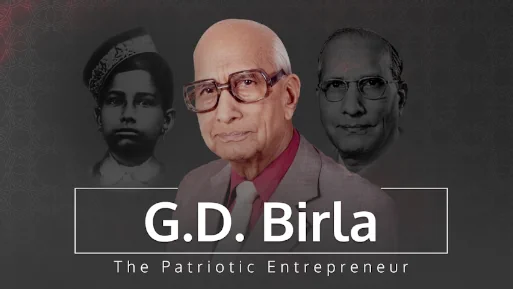Demand side is very strong at 6 per cent global growth: Debu Bhattacharya
20 February, 2014 | Mint
ShareEnsuring raw material security for the group is the big worry for Bhattacharya
Mint
20 February 2014
Mumbai: Debu Bhattacharya , who joined the Aditya Birla Group in 1998, has been the driving force behind the group's $5.5 billion capital expenditure since 2009 as managing director of Hindalco Industries Ltd and vice-chairman of overseas unit Novelis Inc.
Under his leadership, Hindalco became a global non-ferrous company, acquired and turned around Canadian firm Novelis and grew 36 times in size to $15 billion. But challenges abound for the Indian Institute of Technology-educated Bhattacharya, with three new expansions coming on stream in India when the domestic economy is in the midst of a slowdown and the global recovery is still anaemic. Ensuring raw material security for the group is the other big worry for Bhattacharya. Edited excerpts from an interview:
You said while presenting the Q3 results that profits will be under strain in the coming quarters because of higher depreciation and interest. For how long do you expect this to last?
When you put up a big project, you don't get the fruition of all benefits that you had planned immediately. Once we get to the full capacity, then it will be fully in a position to take care of the depreciation and financing charge. It is the intervening period when you have this fixed cost which is relatively high than your earning line.
So, as we produce more, the fixed cost per tonne comes down. Ebitda (earnings before interest, taxes, depreciation, and amortization) per tonne goes up and that should be able to take care of the fixed costs, that is—depreciation and financing charge.
It is difficult to say by when. It will depend on how well we ramp up.
Will it also depend on the market scenario?
It will certainly help if LME (London Metal Exchange) price moves up. In terms of selling, we do not foresee any problem. Demand side is very strong—6% global growth and we are not relying only on the domestic market, though it will be preferred. (Aluminium prices are down despite 6% global demand growth because of oversupplies.)
What is the rate of growth of consumption for aluminium in the domestic market?
Actually I am seeing degrowth.
How much are you exporting?
We are exporting. But my priority is the domestic market. We are selling everything—158,000 tonnes (aluminium) we have produced (in October-December), which is the highest in any quarter, and it will keep going up. So we sell maybe 85-90% (of production) locally.
So 85-90% of your production is sold locally. Still there you are seeing a negative growth in consumption?
Yes. We are better than anybody else. They sell to the export market much more than we do as a percentage (of production).
Are you going to export more like many other metal companies?
If the consumption in the Indian market goes up, I may not have to do it. But in case I have to do it, I have already started seeding (the export market), so that I can sell when the need arises.
Despite this negative growth in the Indian market, your capacity is shooting up. Hindalco is going to produce more than one million tonnes of aluminium. Where will that be absorbed?
The global market. The aluminium market is global. There is no (concept of only) Indian market. Ratio of exports will go up.
Can you give a brief on these markets overseas?
All over the world. Ideally I would like to sell it in the neighbouring market. Many a times it may be far away, but it may have a premium which is significantly higher.
Looking at LME prices, they seem to be under $1,700 a tonne, and that is given by analysts as your approximate cost of production. So do you think there is going to be some stress there on your cost of production?
It is not entirely correct. The three months (price) is $1,728-1,730 a tonne. And we are on 30% quartile and that is significantly better than 70% who are behind us.
Looking at the raw material scenario, there is some stress—your bauxite, as we reported, has quality issues and you have to buy 50% of your bauxite requirement from the local market to blend it in. All that is going to increase with your new plants coming on stream…
We have our own mine for Utkal—a very good mine.
Baplimali?
Correct.
Where, as we have been reading, there is social protest?
No, that is Mali. Mali is a Hindalco mine, but we haven't started mining and that is for a different purpose. Baplimali is our mine which is feeding Utkal exclusively and where bauxite mining and transportation is going on without any problem.
And the rest of your bauxite mines are either getting exhausted or having low quality of ore, which means you have to blend in higher quality of ore from the open market?
That's not true. In the east, we have reasonably good quality bauxite and fairly large quantity. It is Maharashtra that is getting exhausted. Chhattisgarh (mine) is very small.
What about copper? Why are there no copper mines in your control? Have you applied for copper mine leases?
We have Aditya Birla mines in Australia. We have two mines. In India, whatever copper is there is in government control.
So doesn't this speak about your raw material problems—in addition to coal and bauxite, in copper you don't have any source of domestic raw material?
But we put up the plant knowing all this. Even then it makes sense. Highest Ebit (earnings before interest and taxes) has been delivered in this quarter in copper, so what is the big deal?
Is it correct that you have to buy 50% of your bauxite from the open market?
No, that is wrong. The percentage will change. Baplimali is huge and Utkal is a 1.5 million tonnes plant, so that will change the equation completely. I cannot give you a percentage. Belgaum is the only place where we are purchasing bauxite. Because there, the neighbouring mine that we had is exhausted. But we don't produce metal grade alumina there. What we produce is special alumina which fetches much more and therefore profitability does not get affected.
It seems you are getting closer to the end of raw material problems. Coal—looks like it is almost sorted with Mahan stage II clearance coming through. Baplimali, you said, has huge reserves and you are mining over there.
I would say, it has large reserves—it will last for 25-30 years.
So on the raw material front then, things are improving for Hindalco?
Things are getting in place.
And your cost of production will continue to be good—lowest in the world?
We're not the best, but we'll pass by. We'll survive.
Do you see competition picking up in India as Sesa Sterlite Ltd could be purchasing the government's residual stakes in Balco which will strengthen them?
Aluminium business is a global business. So everybody has room. I'm sure Vedanta is planning to grow further. They have done very well and we have also done well, and we would also like to grow.
As I said, globe is the market. Fifty million tonnes every year is growing at 6%, meaning one Hindalco you need to add every year.
For Novelis, analysts say you are not present in key segments—aerospace, extrusions. Also, some say that auto aluminium, which you are betting on, is a fad.
We want to focus on flat rolled products, auto, cans. These three segments. We are the biggest in all these three segments. Rather than be an "also ran", we want to be leaders in whatever we do.
What about automobile aluminium going out of use?
Everybody has a view. Do you think we have invested without having contracts signed? You can't go any closer to the market. We are supplying to Tata JLR (Jaguar Land Rover Automotive Plc) for years now. And you know every brand of JLR is a great success.
So that's a premium brand that is using aluminium?
Premium brand is good enough for us. We're not gunning for discount brands.
That itself is a big market you are saying?
Huge market. BMW, JLR, Mercedes. Ford has gone into pickup trucks. That is not premium.






